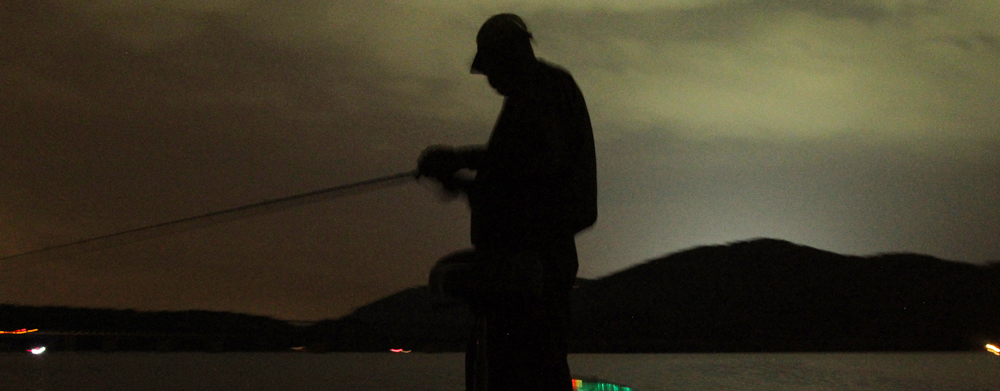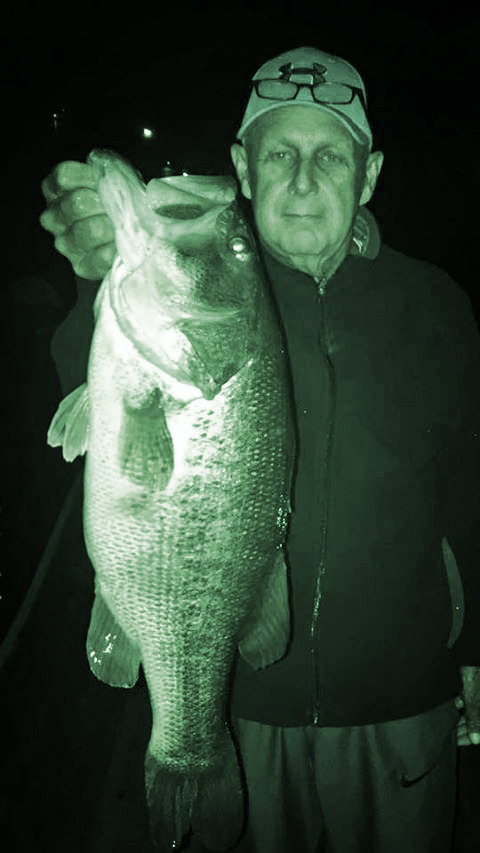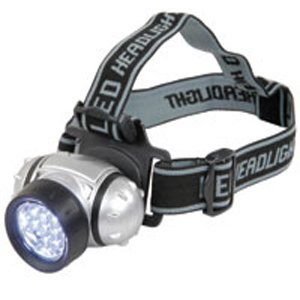Warning: "continue" targeting switch is equivalent to "break". Did you mean to use "continue 2"? in /hermes/walnacweb03/walnacweb03ab/b1018/moo.biggeorgiaspotscom/bpgs01/bpgs01/templates/template03/functions.php on line 177

Night Time is the Right Time for Big Spotted Bass
Written by Bill Payne
June 2017
Many knowledgeable anglers turn to night fishing for spotted bass in the warmer months. The lakes are busy with all kinds of recreational boaters and jet skis and other water craft making daytime fishing a less desireable. Thankfully that is a blessing in disguise. The spotted bass that seem very scarce during the day like to get active at night and roam to and from cover and feed more often. Some scientific studies indicate that as the water temps reach into the 70’s, spotted bass concentrate as much as 80% of their activity during the night time hours. Also, the temps are far more comfortable at night for the fishermen. Avoiding temps in the 90’s and above make for a far better experience.
If you’ve never fished at night, you missing out on one of the greatest experiences in bass fishing. Night fishing is a lot of fun and especially exciting. There’s just something special about catching spotted bass in the darkness of night. Every human sense is elevated. The strikes seem harder, the fish are more energized and fight harder, and everything is magnified except your vision.
Advantages of Night Fishing
The benefits of fishing at night in the summer are:
- Less boat traffic/Calmer waters
- Fish are more active at night
- It’s more comfortable with the lower temps
- Fishing in the darkness of night is far more exciting
- Better chance to catch a real trophy
Lure Selection
A lot of the time, you may be able to fish at night for spotted bass just like you do in the day time. Shakey heads or Texas rigs, jigs, crankbaits, spinnerbaits and even top water lures can work well. The most productive lures seem to be those that bass can track well. Lure with erratic action might get attention, but the bass simply have a difficult time precisely locating their strike, and you end up missing fish. Steady, thumpy retrieves, like those from spinnerbaits and crankbaits, give the bass a clean acoustic signature that they can easily locate.
Darker colors are preferred for most lures at night, which may be counter-intuitive. Wouldn't it seem that darker colors "hide" more in the dark? If you've had this question, do this little test. Select a dark lure and a light lure and hold them up against the sky at night. The dark lure will contrast better and be more easily seen against the sky than a light lure. So when it is dark outside, use dark lures!
Presentation Techniques
Presentation is extremely important. Fish move lower in the water column at night and are typically right near the bottom at night--you can confirm this with your sonar. Therefore you bait right down on bottom so that you can feel the lure contacting any cover that is present like rock, stumps or brush. Also, slow your presentation to give the bass plenty of time to locate it. Slow rolling spinnerbaits and crank baits is almost like working a jig, but just a little faster. Keep it right on the bottom and keep bumping stuff. Lures crashing into things trigger massive strikes, so hang on! If you don't feel the bottom, stop and let your lure fall, then pickup the retrieve again. Also work you bait all the way back to the boat. Spotted bass are notorious for following lures over long distances, and many strikes come right before you pick your lure up for the next cast.

Location, Location, Location
As far as overall lake location, fish the same ares at night as you would during the day. Bass simply don't move around that much between day and night, but there are of course exceptions so pay attention to your sonar and let the fish tell you what they are doing.
The locations you DON'T want to fish are wide open "nothing" areas. If bass are structure oriented during the day, they are even more so at night and they will stick to just about anything: rock piles, creek channels, stump fields, grass beds, sunken boats, etc... No "thing" is too small, especially if surrounded by large expanses of "nothing" --a small brush pile on an otherwise bare long sloping point could be a gold mine!
Many fishermen target lighted areas around docks or marinas and rip rap along bridges. These are obvious "night" target areas and get a lot of fishing pressure, but you can still catch them well with the right presentation. Fishing brightly lit areas strays from the typical "night" techniques in that they tend to be more like day light fishing. Crankbaits and jerk baits and other moving baits, as well as worms in more natural colors, are all good choices brightly lit areas. You’ll want to key on the outer edges of the bright areas as many times there are big fish lurking in the shadows. Sounds spooky doesn’t it? Focus on where the light starts to fade to darkness for those bigger fish. That will likely be the high percentage areas where fish will ambush you baits.
The depth range that most successful anglers target at night is from around 2 ft to 30 ft. Some fish will be up roaming shallow for an easy meal, but these tend to be rogue fish. There are less of them, but they are more prone to crush a lure if you get close to one. The concentrations of fish around brush piles and deep offshore structure that you find during the day will still be there at night. So stick to your favorite fishing holes on your milk run, but if your usual locations don't produce, move more shallow and look for fish on the hunt.
Weather
A heavy wind or strong current can be a negative at night. Move away from heavy current and find more protected areas to avoid higher winds and waves. Generally, lakes with clear water and heavy day time boat traffic will offer the best night time fishing. Day time weather can play a vital role in night time feeding of spotted bass. There are exceptions to everything and no absolutes in fishing but I find that the best nights are often after a calm and still, hot, sunny day. Conversely, some of my poorer nights have been after cool, cloudy or windy days. I very much dislike evening or night time thunder storms because I have seen it almost completely shut down the bite.
We Have to Talk About It...
Let’s talk safety…..It is extremely important to take a safety precautions. Make sure you running lights are in perfect working order. Always wear your life vest and slow down. There’s really no good reason to be running 60 or more mph up and down the lake in the dark of night. That one more place to fish or whatever does not trump safety for you, your passenger, or other anglers. Watch out for other boaters and recreational craft that may be anchored or adrift and not well lighted. Unfortunately, every year there are accidents and some are fatal. Let’s all do our part to help prevent accidents. Be on guard and slow down!!!! There’s also the chance of floating debris in the water that is very difficult to see at night. It pays to be familiar with the lake and areas you plan to fish because everything can look different at night.

Gear Up!
Effective tools for night fishing:
- A good flash light
- A good GPS and sonar
- Fluorescent fishing line
- Black lights
- A spot light
- A lighted buoy marker
There’s just something about fishing at night that’s ultra-exciting. When you set the hook, you really don’t know what you’ve got on the end of your line until you get up to the boat. The possibility of catching the bass of a lifetime on a warm summer night is very real. Big bass move better at night and when they are moving and active, the chances of catching them is much better than during the day..
Get Someone to Show You
If you haven’t fished at night and even if you are an experienced day time fisherman, It would be very wise to get with an experienced night fisherman or hire an experienced guide (wink wink, nudge, nudge) that fishes at night to show you what its all about.
So, let’s get your night fishing on!!!! Not only can you escape the crowds but the heat as well. If you are not already a night fishing convert, you’ll find that there is nothing that will match the excitement of a foot of slack suddenly knocked in your line by a 4 pound Alabama spotted bass.

